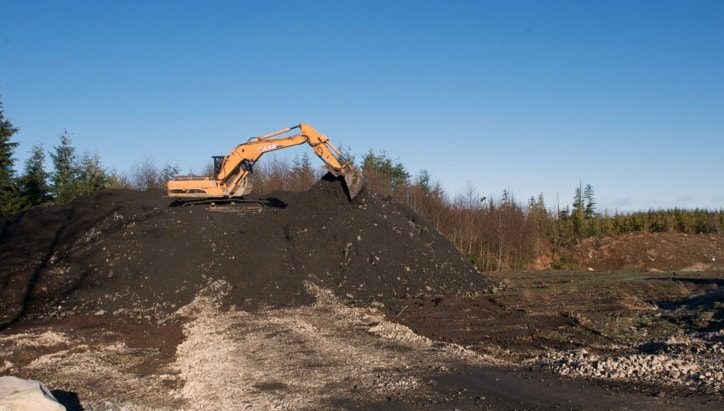The acceptance of truckloads of contaminated soil at 7 Mile Landfill will help the Regional District of Mount Waddington limit its taxpayers' burden, but drew concern from some residents when the first bargeload of trucks arrived last week.
The Regional District's board of directors approved the delivery of the soils by Hazco Environmental Services, which will help pay down the principal on financiing of improvements to the landfill by hundreds of thousands of dollars.
Hazco, which accumulates the soil from its various demolition, site remediation and construction projects, pays tipping charges to the district. It will also place the soils, which are to be used to supplement capping part of the landfill when Phase I and II exhaust their airspace allowance in 2012, to the district's specification.
Finally, Hazco will pay to hydroseed the soil in its final destination atop the landfill, which could provide a level of methane mitgation, according to RDMW Operations Manager Patrick Donaghy.
"When we're dealing with contaminated soils there's alway concern," said Donaghy, who noted his office and Hazco have each fielded calls about soil spilled onto the highway during last week's initial delivery and concern about its impact on the environment. "Most of the contamination is metals, mostly copper. But as a percentage you're probably looking at less than one gram in all that (spillage).
"It's like someone dropping a washer on the side of the road, that's how miniscule it is. We have far more contamination concerns with the garbage we put out on the curb each week."
Donaghy was asked about the soil during last week's Regional District board meeting, by one director who had apparently been contacted by one or more residents.
He pointed out that Hazco pays for testing of its soils, and that any metal or hydrocarbon content falls within limits set by the Ministry of Environment.
"I think it's also worth pointing out that any soils destined for here are tested at the source, before they ever get to the North Island," board chair Al Huddlestan said.
The criticism of the Hazco soil delivery was compounded when one of its drivers last week took his load from the barge dock through Port McNeill on the way to Highway 19 and the landfill.
The drivers of the 18 trucks were instructed to take West Main to limit the amount of time and distance they spent on the highway.
"Apparently one driver did not listen to that, and he's been reprimanded," Donaghy said. "Hazco does a lot of planning up front to ensure the public is not inconvenienced, and they get suitably choked when somebody decides to make their own plan."
Brian Fagan, a Hazco manager on Vancouver Island, concurred.
"Running a fully loaded truck through residential and school zones runs against our operational philosophy," Fagan said. "We know the nature of our work can occasionally be controversial, and the worst thing that can happen is to have one person decide to go do their own thing."
